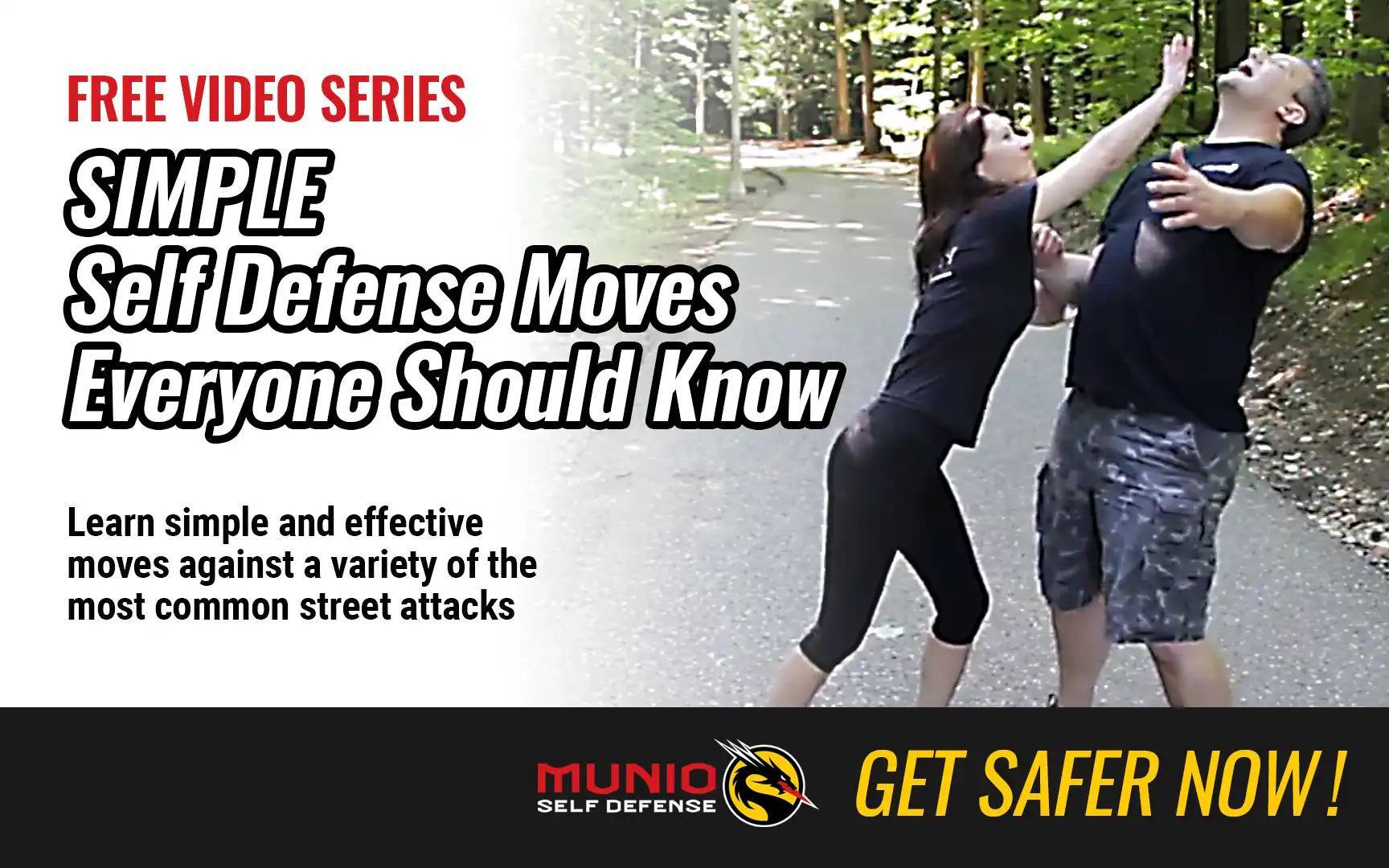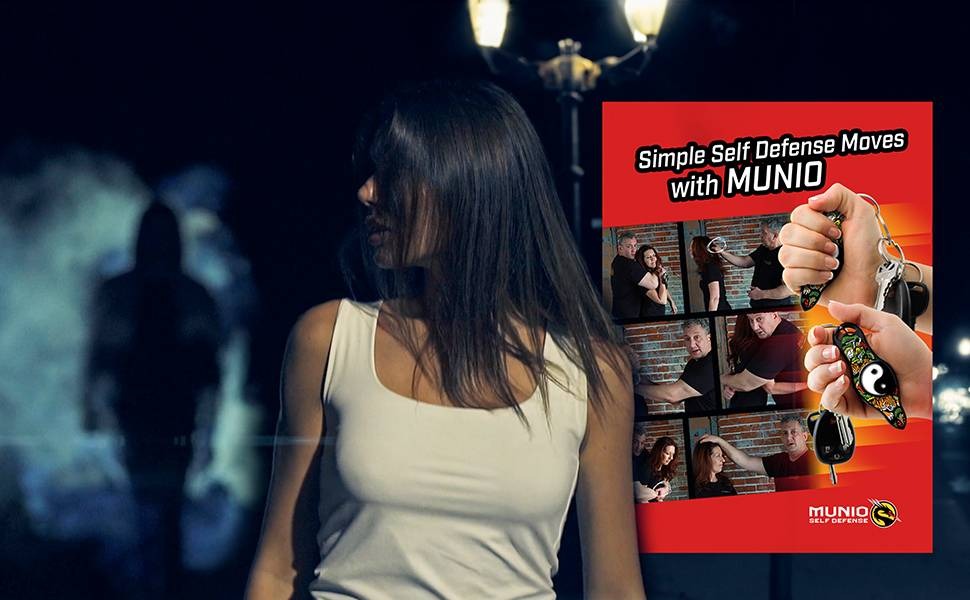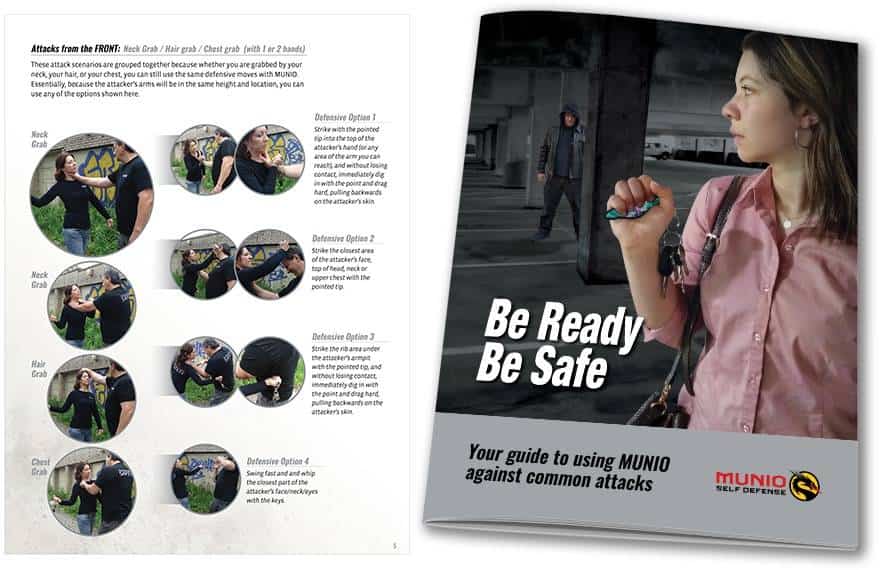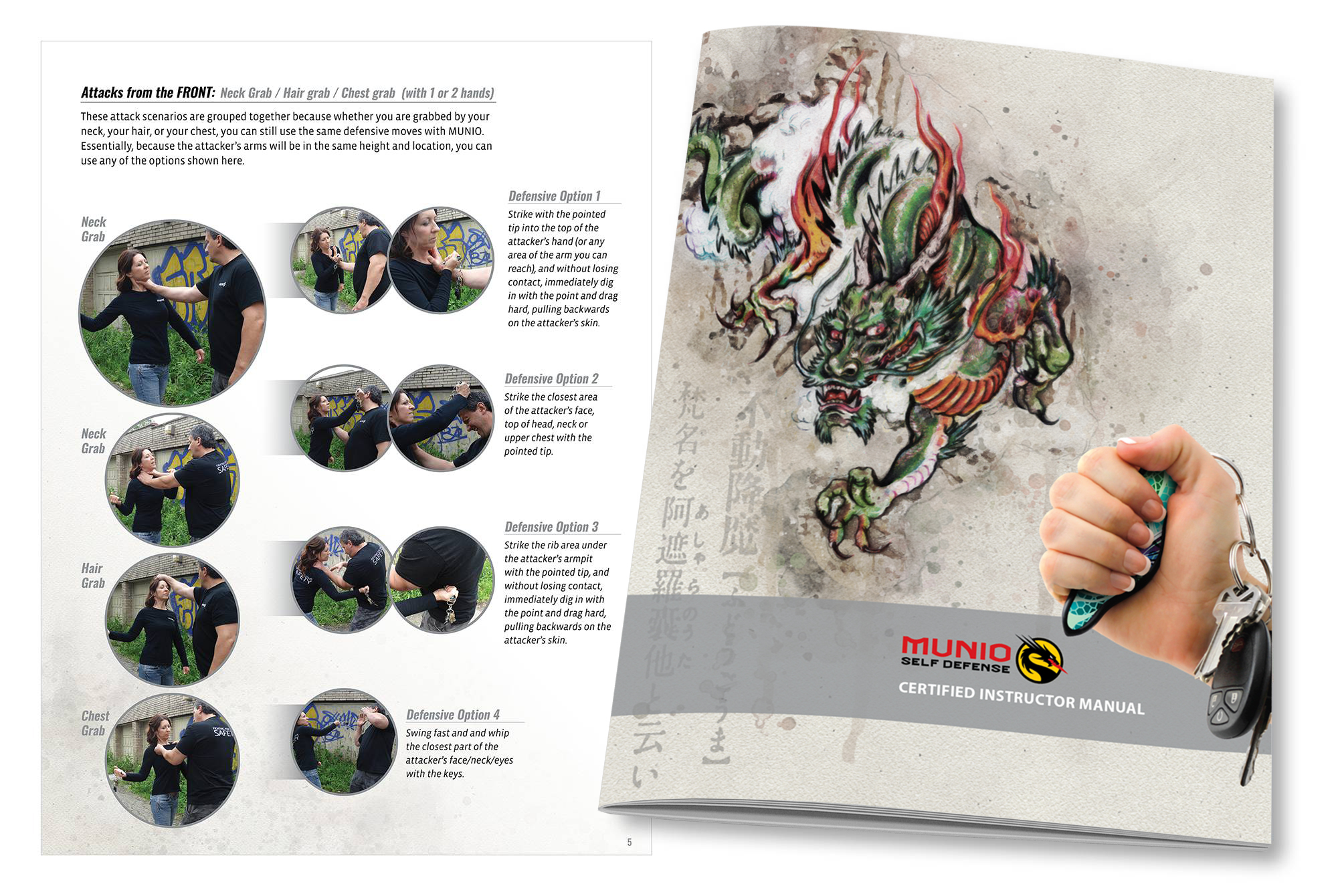Curious which one offers the strongest defense, taser vs pepper spray? I recently interviewed police trainees to find out their take on which one is the more effective self-defense tool. Keep reading to see what they said and learn some tips about using pepper spray and taser guns to defend yourself from attackers.

Pepper Spray vs. Taser: What Are They?
Let’s start with a closer look at both of these self-defense tools.
Pepper spray is a self-defense tool containing oleoresin capsicum, an oily extract of pepper plants derived from the genus Capsicum. It used to inflame the eyes of an attacker, temporarily disabling their vision, but without the risk of long-term damage or fatality. Other names include mace and OC spray.
Taser guns are handheld devices used to incapacitate an attacker by disrupting their voluntary muscle control by administering electroshock. Fun fact: Taser is actually an acronym that stands for “Tom A. Swift Electric Rifle,” a reference to the early-twentieth-century Tom Swift children’s book series about an inventor of wondrous gadgets. Taser International was the brand manufacturer’s name for quite some time, and now it is Axon.
How does being pepper sprayed compare with being tasered? Police cadet Michelle shared with me her take on both of these experiences during her academy training.
On Being Tasered:
Michelle stood at the mat’s edge while two fellow police cadets held her arms on either side. Behind her, she heard the Taser instructor shout, “Taser! Taser! Taser!” Suddenly, she felt a tremendous jolt of electrical current flow through her body. Before her speech ability ceased, she uttered some of the foulest words imaginable. The other cadets were stunned. They didn’t think she knew these words.
Because she couldn’t move, she was laid prone on the mat by her helpers. After five seconds, the intense pain subsided, and the instructor removed the two Taser probes that penetrated her Academy-issue T-shirt and skin from 12 feet away.
From that distance, the probes spread apart about 12 inches, allowing for the maximum amount of electricity to enter her body. She absorbed about 50,000 volts of electricity, and while this sounds fatal, it is the amps that kill you and not necessarily the volts. In police academy jargon, Michelle had “taken the ride.”
On Being Pepper Sprayed:
The previous week in training, Michelle and her class had been pepper sprayed. She remembers it this way: “I took out my contact lenses and pulled my hair back. I was in line with five other cadets when the instructor gave us a blast of pepper spray at the eyebrow level. The spray is pretty oily, so it quickly entered my eyes, nose, and throat. My eyes slammed shut, my face burned, and I had trouble breathing. I also produced more nasal mucous than anyone ever should. At this point the instructor made us run a short obstacle course. At the end I pried my eyes open to read a vehicle license plate.
“Immediately after this, someone used a garden hose and cold water to thoroughly drench my face. Within 30 minutes I was fairly recovered but not at my peak capacity. The next day, my skin felt like I had a mild sunburn.”
Read More: What Does Pepper Spray Feel Like?
Pepper Spray vs Taser for Self-Defense: What You Should Know
After interviewing instructors and students of both Taser and pepper spray disciplines, I learned that most students would rather be Tased than pepper sprayed. The main reason is that the extremely intensive “jolt” of a Taser only lasts five seconds, whereas the effects of the pepper spray linger the following day.
But this is not the end of the story. For those of you reading this article and thinking, “OK, I guess I will buy pepper spray,” here are some critical considerations:
- While it can deter an attacker, in my opinion, pepper spray is not a device that incapacitates an assailant. Evidence: police cadets can still function after being pepper sprayed, whereas a Taser stun renders them incapable, or largely incapable, of movement.
- Pepper spray requires practice. Pepper spray is pretty simple to use, but buyers should also purchase another can, called inert spray, for practice.
- Know the difference between a Taser and a stun gun. While a Taser shoots probes, or darts, out to about 20 feet, with a stun gun, you must have direct contact with the assailant.
- Tasers are not without their critics. Some say the success rates claimed are not accurate and the desired effect is not achieved 100 percent of the time. Generally, this appears to happen when the probes do not spread apart far enough to send the optimal charge through the target. Keep in mind, though, that the Taser can also be used as a stun gun if you’re close to the assailant.
- Pepper spray is more easily carried and concealed than a Taser. It’s also a lot cheaper. However, smaller containers have less volume that you may need to effectively deter an assault.
- Taser guns and pepper spray aren’t always accessible or easy to use. When evaluating any type of self-defense product, it’s important to ask yourself how available it will be when you least expect to use it. Attacks are never planned, after all. Where will your spray or Taser be if you’re attacked from behind? What if you deploy your self-defense tool of choice and it doesn’t work? The more complicated your tool is, the more you need to practice using it until it’s like second nature.
Get Maximum Protection with a Self-Defense Keychain
A force multiplier tool like the MUNIO Self Defense Keychain is always ready to use immediately if you carry it properly on your keychain. Like other kubotan and palm stick self-defense tools, you can use MUNIO to strike an attacker and inflict enough pain to disable them so you can get away safely.
Some people feel more comfortable carrying multiple layers of protection. You might also be carrying pepper spray, a Taser, or a firearm, but in some attack situations, you are physically not in a position to use them effectively — for instance, if you encounter a bear hug over your arms from behind. A MUNIO can be used first, even in this circumstance, giving you the space and time needed to deploy longer ranged or even lethal tools if you feel another level of incapacitation or force is necessary.








